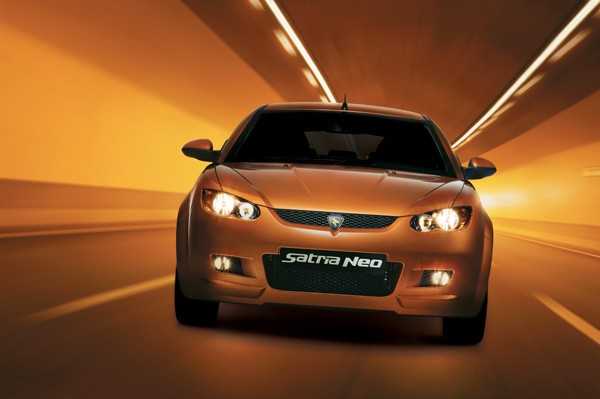Proton has introduced its new Satria coupe in Australia. Interestingly, the Malaysian maker has giving it a pseudo-Italian title of Satria Neo as part of a marketing campaign aiming at having buyers seeing the Satria as a competitor for the European cars, rather than Asian ones.
The Australian Proton guys may be rather optimistic in saying that potential Satria Neo buyers will also be researching Citroen’s C2, Ford’s Fiesta, Holden’s Astra and Volkswagen’s Polo, rather than the Korean and Japanese marques, but there’s no harm in aiming high.
We really like the shape of the Proton Satria, particularly because it looks distinctively Malaysian in its design. We are rather tired of other Asian car makers penning near-neutral body shapes in an attempt to please everyone on the planet. We like the fact that the Malaysians have gone for a design that reflects their own culture and tastes.
The new Satria Neo is virtually a four-seater even if average-sized adults are carried in the rear. So it could easily be used as a low-cost family car for those with a pair of pre-teen children.
Boot space is good for this class and is easy to reach under a high-opening rear hatch.
Handling is brilliant in the usual Proton manner as there’s a lot design input from Lotus, the British sports car maker. These days Lotus is controlled by Proton. Keen drivers will love the way the Proton Satria holds the road in a neutral, well-balanced way until it reaches its very high limits of adhesion. All with plenty of feedback to tell you exactly what the chassis is doing.
The five-speed manual gearbox is light and easy in its action so using it is certainly no hardship. There’s also a four-speed automatic transmission in the new Satria range, but we haven’t had a chance to drive one yet.
Proton Satria Neo is well-priced and carries a high level of equipment. There are two models; even the lowest priced, the $18,990 Satria Neo GX has air conditioning, a four-speaker CD/MP3 stereo with steering wheel controls, and power windows and door mirrors. Major safety items include four-wheel disc brakes with ABS, twin airbags and reversing sensors.
The $20,990 Satria Neo GXR gains alloy wheels, Continental sports tyres, a rear spoiler, front foglamps, the air conditioning is automatic, a higher grade of cloth trim, and cruise control (but only with automatic transmission).
Automatic transmission is very reasonably priced at $1000, a saving of about $500 to $1000 compared to that in most rivals.
The biggest hit with the previous Satria range in Australia was the little Satria GTi which was a real hot shot that greatly appealed to those who love to drive. Proton is still being coy about the possibility of a new GTi, but says an announcement will be made within the next two to three months.
Proton Satria Neo is on sale now and comes with the company’s usual warranty of three years with no distance limit.
